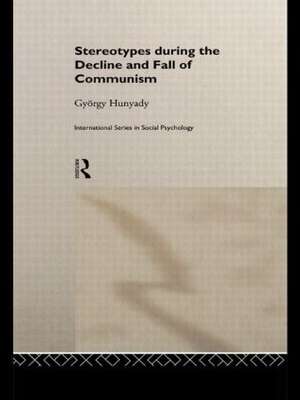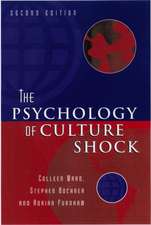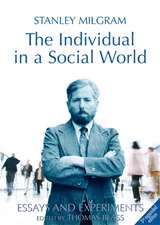Stereotypes During the Decline and Fall of Communism: International Series in Social Psychology
Autor Gyorgy Hunyadyen Limba Engleză Paperback – 9 dec 2015
| Toate formatele și edițiile | Preț | Express |
|---|---|---|
| Paperback (1) | 467.44 lei 6-8 săpt. | |
| Taylor & Francis – 9 dec 2015 | 467.44 lei 6-8 săpt. | |
| Hardback (1) | 1173.10 lei 6-8 săpt. | |
| Taylor & Francis – 25 iun 1998 | 1173.10 lei 6-8 săpt. |
Preț: 467.44 lei
Nou
Puncte Express: 701
Preț estimativ în valută:
89.45€ • 97.14$ • 75.14£
89.45€ • 97.14$ • 75.14£
Carte tipărită la comandă
Livrare economică 22 aprilie-06 mai
Preluare comenzi: 021 569.72.76
Specificații
ISBN-13: 9781138876859
ISBN-10: 1138876852
Pagini: 304
Dimensiuni: 152 x 229 x 16 mm
Greutate: 0.41 kg
Ediția:1
Editura: Taylor & Francis
Colecția Routledge
Seria International Series in Social Psychology
Locul publicării:Oxford, United Kingdom
ISBN-10: 1138876852
Pagini: 304
Dimensiuni: 152 x 229 x 16 mm
Greutate: 0.41 kg
Ediția:1
Editura: Taylor & Francis
Colecția Routledge
Seria International Series in Social Psychology
Locul publicării:Oxford, United Kingdom
Cuprins
1 Stereotype systems research 2 The cognitive domain of nations: I National categories and attitudes 3 The cognitive domain of nations: II National stereotypes 4 The domain of societal categories: perception of occupational groups and class relations 5 The domain of historical periods: beliefs about 20th-century history 6 Stability of and changes in stereotypes: results
Notă biografică
György Hunyady is Professor of Social Psychology at Eötvös Loránd University, Budapest, Hungary, and has published widely in Hungarian and English, mainly in the fields of social perception, belief systems and cognitive psychology
Descriere
Hunyady provides a summary of unique data from a series of 14 substantial surveys from the mid-1960s through to 1994 on how Hungarians viewed themselves and others.





















